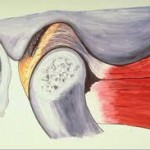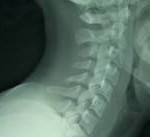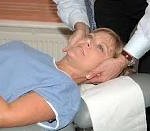Try opening your mouth and tilting your head. Is there pain or do you hear clicking sounds? It is very annoying and very uncomfortable when you have neck and jaw pain. When pain in the neck and in your jaw occur at the same time, you are often faced with trouble doing your everyday activities and even maintain a good social life. Simple tasks become very complicated if you have a painful area in your body. There are times when you can’t even turn your head to greet anyone or call out to a friend because of your neck and jaw pain.
Neck and jaw pain can happen to anyone. Usually, it is just dismissed and dealt with lightly every single day. To know more about neck and jaw pain, read on and maybe there are some interesting points that you might just want to share with your doctor:
1. Causes
 Some of the causes of neck and jaw pain can be hunching, leaning, stiffening of the vertebral disks, bone spurs, herniated disks, cancer, meningitis, arthritis, whiplash, jaw injuries, TMJ ailments, dental problems, and overuse of the jaw. TMJ is one of the common but specialized causes of neck and jaw pain. It is often related to arthritis, dislocation, and injury. Significant injuries that can happen to your jaw are shattered jaw bones or dislocation, wherein the jaw goes out of the joint attachment. Stress of any kind can really cause neck and jaw pain. During these stress-filled events, you tend to experience a greater deal of pain in areas that you use frequently. In stressful situations, you could unconsciously clench your jaw and grind your teeth to show agitation or deep emotional or mental stress.
Some of the causes of neck and jaw pain can be hunching, leaning, stiffening of the vertebral disks, bone spurs, herniated disks, cancer, meningitis, arthritis, whiplash, jaw injuries, TMJ ailments, dental problems, and overuse of the jaw. TMJ is one of the common but specialized causes of neck and jaw pain. It is often related to arthritis, dislocation, and injury. Significant injuries that can happen to your jaw are shattered jaw bones or dislocation, wherein the jaw goes out of the joint attachment. Stress of any kind can really cause neck and jaw pain. During these stress-filled events, you tend to experience a greater deal of pain in areas that you use frequently. In stressful situations, you could unconsciously clench your jaw and grind your teeth to show agitation or deep emotional or mental stress.
2. Signs and symptoms
 When you have neck and jaw pain, you cannot move your neck easily. Pain in the neck area occurs more and more frequently as you mature because of the natural wearing and tearing that happens every single day of your life. It may be a sign of a possibly developing arthritis. Pain in the jaw can be signaled by a crooked bite, problems in closing the mouth, speech problems, limited jaw movement, bumps situated on your cheek, and stiffness of the jaw. The pain in the jaw line may also extend to the ear area, resulting to headaches.
When you have neck and jaw pain, you cannot move your neck easily. Pain in the neck area occurs more and more frequently as you mature because of the natural wearing and tearing that happens every single day of your life. It may be a sign of a possibly developing arthritis. Pain in the jaw can be signaled by a crooked bite, problems in closing the mouth, speech problems, limited jaw movement, bumps situated on your cheek, and stiffness of the jaw. The pain in the jaw line may also extend to the ear area, resulting to headaches.
3. Diagnostics
 When you want to be properly diagnosed about your neck and jaw pain, expect to answer a set of questions that will be able to give the doctor a clear idea of what you are feeling. You will also need to undergo a series of MRIs to view the nerves and the spinal cord, x-rays (dental problem) if you have bone spurs or protruding disks, EMG to assess nerve function, and CT scan (for TMJ diagnosis), to view the sections of internal anatomical structures.
When you want to be properly diagnosed about your neck and jaw pain, expect to answer a set of questions that will be able to give the doctor a clear idea of what you are feeling. You will also need to undergo a series of MRIs to view the nerves and the spinal cord, x-rays (dental problem) if you have bone spurs or protruding disks, EMG to assess nerve function, and CT scan (for TMJ diagnosis), to view the sections of internal anatomical structures.
4. Treatments
 For light cases if pain in the neck, relief can be obtained through OTC pain and anti-inflammatory medications, ice and hot water packs, and gentle stretches. Muscle relaxants are given for severe level of pain. If you have a slightly broken jaw, you could have a liquid diet first with pain medications. If it is severely fractured, surgery will be the best solution. TMJ ailments need a dental correction, bite guard, and  some painkillers. You can also be rid of neck and jaw pain without taking any form of medications. A chiropractor will be of great help to you in this area. Of course, he has to have a full understanding of your symptoms and after that, thorough adjustments will be performed on you. You could also follow the chiropractic practices in relieving TMJ dysfunctions like resting the jaw, eating soft foods or go on a liquid diet, avoiding hard or crunchy foods, applying ice pack on the neck and jaw muscles, wearing a night guard for your teeth while sleeping, and manage stress.
For light cases if pain in the neck, relief can be obtained through OTC pain and anti-inflammatory medications, ice and hot water packs, and gentle stretches. Muscle relaxants are given for severe level of pain. If you have a slightly broken jaw, you could have a liquid diet first with pain medications. If it is severely fractured, surgery will be the best solution. TMJ ailments need a dental correction, bite guard, and  some painkillers. You can also be rid of neck and jaw pain without taking any form of medications. A chiropractor will be of great help to you in this area. Of course, he has to have a full understanding of your symptoms and after that, thorough adjustments will be performed on you. You could also follow the chiropractic practices in relieving TMJ dysfunctions like resting the jaw, eating soft foods or go on a liquid diet, avoiding hard or crunchy foods, applying ice pack on the neck and jaw muscles, wearing a night guard for your teeth while sleeping, and manage stress.
You can experience neck and jaw pain separately but when you simultaneously get them, you are most probably stricken with a TMJ dysfunction. When your temporomandibular joint (joint that connects the lower and the upper jaw, located below the ears) is overworked, tight, or affected by a nerve irritation. But still consider other causes of neck and jaw pain such as bone spurs, bulging vertebral disks, and misaligned joint in the neck. Make sure that you keep in touch with your doctor so that your progress may be monitored well. It will really benefit your overall health if you cooperate during therapy and medication treatments.
